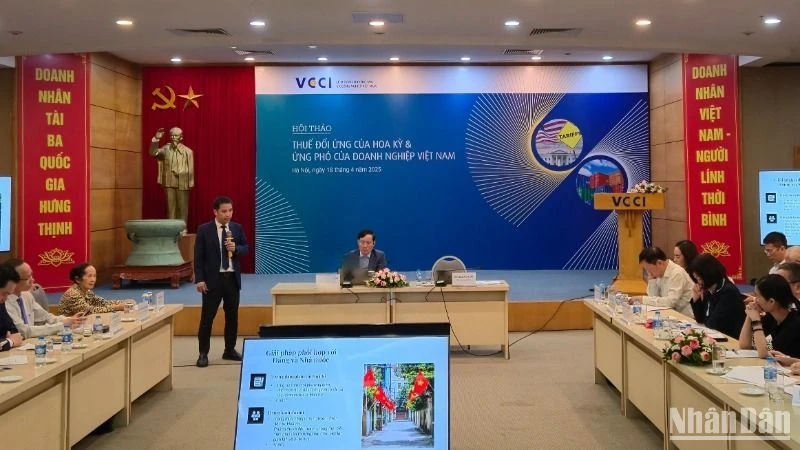
That was the affirmation of Chairman of Vietnam Federation of Commerce and Industry (VCCI) Pham Tan Cong at the Workshop "Reciprocal Tax" of the United States and Vietnamese Enterprises' Response" organized by VCCI on April 18, in Hanoi .
The workshop was held in the context of the US temporarily postponing the application of the 46% reciprocal tax rate on Vietnam for 90 days. Therefore, this is an opportunity for experts, managers, representatives of associations and businesses to exchange, discuss and find effective solutions to effectively respond to the new tax rate of the US. Thereby, helping businesses improve the adaptability, resilience and strong rise of the Vietnamese economy in the global trade chain.
Speaking at the Workshop, VCCI Chairman Pham Tan Cong said that US President Donald Trump The proposal to impose reciprocal tariffs on more than 180 economies in the world, of which Vietnam will be subject to a rate of 46%, has created a global trade earthquake, signaling a new turning point for global trade, creating the rise of unilateral protectionism and unpredictability in policy management. customs duty
Although the United States recently announced a 90-day suspension of reciprocal tariffs, there are still potential complications, many risks, and major challenges for Vietnamese businesses, especially those exporting to the US market.
According to VCCI's review, the United States accounts for nearly 30% of Vietnam's total export turnover in 2024 with key products such as electronics, Textiles, footwear, wood and wood products, seafood, machinery, equipment, etc. Among them, many industries have an export proportion to the United States of up to 40%, even exceeding 50%, such as wood, textile, electronic equipment, etc.
This shows that if the reciprocal tax is applied, Vietnamese enterprises will be severely damaged due to loss of market share, reduced competitiveness, and production disruption. This will lead to job losses for workers, affecting social security and the overall growth of the country's economy.
Therefore, VCCI Chairman Pham Tan Cong said that in danger there is always opportunity, because businesses need to consider this as a time for Vietnam to review its development strategy, improve internal capacity, proactively adapt and reposition Vietnam's role in the global supply chain.
The United States accounts for nearly 30% of Vietnam's total export turnover in 2024 with key items such as: electronics, textiles, footwear, wood and wood products, seafood, machinery, equipment, etc. In particular, many industries have an export proportion to the United States of up to over 40%, even exceeding 50%, such as wood, textiles, electronic equipment, etc.
It is necessary to continue to diversify export markets and supply chains, effectively exploiting the 17 signed free trade agreements (FTAs) to expand to less risky areas. Along with that, with a potential domestic market of 100 million people, a young population, it is necessary to pay more attention to developing the domestic market. This is considered a solid pillar. At the same time, it is necessary to continue to promote bilateral cooperation with the United States, affirming its position as a reliable partner in green and clean fields.
At the workshop, some economic experts also said that although the reciprocal tax policy poses many challenges, this is also an opportunity for Vietnam to restructure its economy, promote the shift to a sustainable development model, reduce dependence on a few markets and improve resilience to external fluctuations.
Economist Can Van Luc said that the US proposal to impose reciprocal tariffs on many countries, including Vietnam, has created a number of challenges for the economy. Therefore, diversifying markets, partners, supply chains, products, services and capital sources to adapt to green transformation and circular business models is a top priority for businesses today.
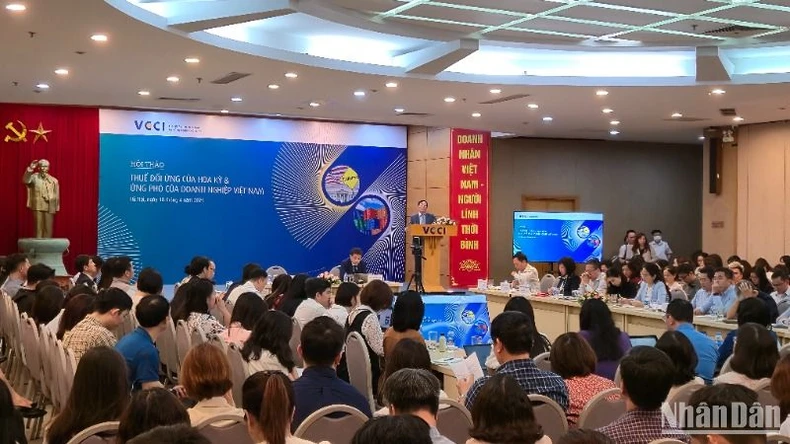
With the forecast scenario of the US imposing a reciprocal tax of about 20 to 25% on Vietnamese goods exported to the US, it is estimated that the additional value to be paid will be about 55 billion USD/year. In case Vietnam reduces the tax to 0% for US goods, the loss in tax revenue is estimated at about 1.2 billion USD.
However, according to Dr. Can Van Luc, Vietnam has certain opportunities when it can expand exports to other markets; new opportunities from investment shifting trends, supply chains,...
However, the Government also needs to pay more attention to measures to promote mutually beneficial cooperation with the United States, strengthen dialogue and negotiations through various channels. Quickly implement specific solutions to better balance trade with the United States by increasing imports, continuing to reduce reciprocal taxes on imports from the United States, etc.
Finding effective solutions to cope with the new US tariff policy not only helps businesses overcome immediate difficulties but also opens up opportunities to affirm Vietnam's new position in the global value chain.
Source: https://baolangson.vn/ho-tro-doanh-nghiep-vuot-qua-thach-thuc-tu-thue-quan-cua-hoa-ky-5044470.html


![[Photo] General Secretary To Lam visits exhibition of achievements in private economic development](https://vphoto.vietnam.vn/thumb/1200x675/vietnam/resource/IMAGE/2025/5/18/1809dc545f214a86911fe2d2d0fde2e8)




![[Photo] National conference to disseminate and implement Resolution No. 66-NQ/TW and Resolution No. 68-NQ/TW of the Politburo](https://vphoto.vietnam.vn/thumb/1200x675/vietnam/resource/IMAGE/2025/5/18/adf666b9303a4213998b395b05234b6a)


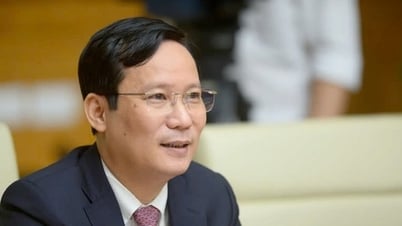


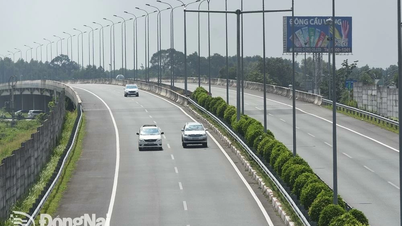

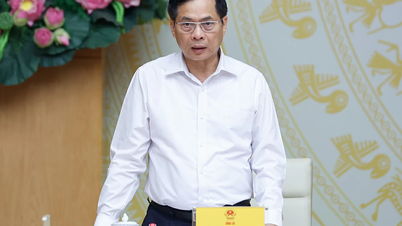



























































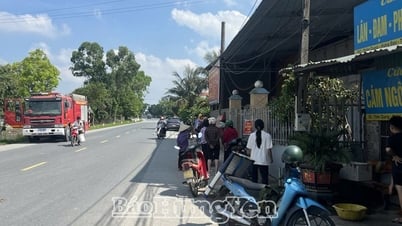
















Comment (0)